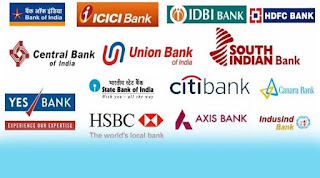Hi friends
Kotak mahindra bank launched a video based kyc for kotak 811 No need to Visit a Branch
If board meetings, family get-togethers and even marriages can happen via video calls, could opening bank accounts have been far behind?
Several Indian banks are preparing to offer customers the option of opening a new account through video conferencing instead of visiting a branch. Most of the large lenders are in the final stages of launching know-your-customer (KYC) video platforms, said bankers familiar with the matter.
Signing up customers through video calls is a significant step in the digitisation efforts of banks and could amplify branchless banking, an avowed ambition of these institutions that are looking at new ways to stay nimble while reaching out to customers beyond the major cities.
To open an account, customers so far had to either walk into a branch to fill up forms or have an agent visiting their homes to collect documents and signatures. In some cases a basic bank account could be opened online through Aadhaar, but for full service accounts paper documentation was mandatory.
“The top 10 banks in the country are mostly ready with the video KYC product and a few have already gone live while others are doing internal tests,” said a banker. Online onboarding of customers
Will be a reality, he said asking not to be named.
Will be a reality, he said asking not to be named.
Kotak Mahindra Bank, a leading private lender, said it has launched a pilot for opening savings bank accounts online.
Shanti Ekambaram, group president – Consumer Banking, Kotak Mahindra Bank, said video KYC can prove to be a game changer where customer verification is completed from the comfort of one’s home or office without the need for a physical interaction. “We must now adapt to the aftermath of COVID-19,” said Ekambaram.
The new offering will be part of Kotak’s 811 digital banking suite.
Here is how it will work, according to the workflow shared by Kotak Mahindra Bank. Customers will have to visit the bank’s website, share personal details, give consent to the use of Aadhaar for verification and enable access to the phone’s location for video KYC. Once a bank executive completes the conversation with the customer over a video, a savings bank account gets opened.
Sameer Shetty, head of digital banking at Axis Bank, said the lender is developing a digital video-enabled account opening platform for more than 250 services the bank offers. The service will offer full KYC account opening and eventually other solutions like savings, investments and others as well.
An IndusInd Bank spokesperson said Video KYC will simplify the operating paradigm through an effective end-to-end solution for onboarding new customers.
 |
| Kotak Mahindra Bank Customer Care No |
A paradigm shift
The Reserve Bank of India permitted digital account opening in a revised ‘master direction’ for KYC on January 9 this year. It allowed customers to get on a live video call with a bank’s agent and submit proof of identity digitally.
Customers were also allowed to digitally sign documents thereby doing away with paper-based KYC. The banking regulator only insisted on geo-tagging the location of a customer to prevent people from outside India from opening a bank account.
While it has taken banks more than six months to introduce online opening of accounts, a part of the delay was due to the Covid19 induced nationwide lockdowns, according to bankers Moneycontrol spoke to.
ICICI Bank, HDFC Bank and Bank of Baroda too are preparing to go live with online KYC, according to people familiar with the plans. The banks are in different stages of integrating a video platform into their customer onboarding process, they said.
Email queries sent to ICICI Bank, HDFC Bank, State Bank of India and Bank of Baroda did not get a response until time of publication of the report.
“Some bit of back end training is required for staff in order to make the process seamless,” said a banker with a top private sector lender, requesting anonymity.
In order to enable the video platform to function, banks need to integrate with technology service providers that can help them complete the KYC. Tech startups such as IDfy, Khosla Labs and WorkApps, among others are working closely with banks for this service.
Wriju Ray, co-founder of IDfy, said his platform has gone live with a few banks with its video KYC platform and found that end users have adopted it with gusto. “In the post COVID world, there is certainly great momentum with large number of banks and NBFCs currently integrating and preparing to go live,” he said.
One of the bankers quoted above said that one bank ordered 100 webcams online after the restrictions on ecommerce deliveries got lifted in the major cities of the country.
Despite the potential benefits of going digital, industry insiders believe that there are bound to be initial hiccups.
“We could see some initial drop offs here and there because customers might not be aware of documents to be shared or how to go about the process or internet connectivity might be an issue in specific areas,” said Rudrajeet Desai, founder, WorkApps.
Consumers will also certainly take time to move digital completely. Despite the raft of apps, banking customers in some countries in the West have preferred opening accounts in person at a bank branch to opening virtual accounts.











